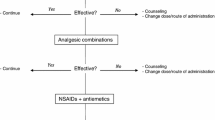Abstract
The role of psychological factors related to headache, particularly tension-type headache (TTH), has long been a focus of investigation. The subject at issue is a complex one, with some aspects that are still being debated by experts. In episodic TTH, it is possible to hypothesise that headache is not only a “primary” headache that causes gratuitous pain to sufferers. In fact, it might represent an improper mode of communicating the sufferers’ intimate discomfort, caused by an inadequate relationship between their personality profiles and events in their lives. As in migraine, in TTH, too, evidence has been found of comorbidity between headache and psychiatric disorders, including depression and anxiety disorder. Such evidence will have to be confirmed by further studies on the general population. As regards behaviour and personality traits, subjects with TTH had significantly higher scores than healthy controls on measures of automatic thoughts and alexithymia, and lower scores on assertiveness. Patients with chronic TTH had higher automatic thoughts scores than patients with episodic TTH. These findings suggest that people with TTH may have difficulty in expressing their emotions. Finally, psychological factors and emotional disturbances have been indicated as risk factors for TTH. Indeed, stress and mental tension are the most common factors that cause TTH.
Similar content being viewed by others
References
Headache Classification Committee of the International Headache Society (2004) The International Classification of Headache Disorders, 2nd Edition. Cephalalgia 24[Suppl 1]:1–160
Holroyd KA (2002) Behavioral and psychologic aspects of the pathophysiology and management of tension-type headache. Curr Pain Headache Rep 6:401–407
Nash JM, Thebarge RW (2006) Understanding psychological stress, its biological processes, and impact on primary headache. Headache 46:1377–1386
Merikangas KR, Angst J, Isler H (1990) Migraine and psychopathology. Results of the Zurich cohort study of young adults. Arch Gen Psychiatry 47:849–853
Breslau N, Davis GC, Andreski P (1991) Migraine, psychiatric disorders, and suicide attempts: an epidemiologic study of young adults. Psychiatry Res 37:11–23
Puca F, Genco S, Prudenzano MP et al (1999) Psychiatric comorbidity and psychosocial stress in patients with tension-type headache from headache centers in Italy. The Italian Collaborative Group for the Study of Psychopathological Factors in Primary Headaches. Cephalalgia 19:159–164
Holroyd KA, Stensland M, Lipchik GL et al (2000) Psychosocial correlates and impact of chronic tension-type headaches. Headache 40:3–16
Mitsikostas DD, Thomas AM (1999) Comorbidity of headache and depressive disorders. Cephalalgia 19:211–217
Marazziti D, Toni C, Pedri S et al (1995) Headache, panic disorder and depression: comorbidity or a spectrum? Neuropsychobiology 31:125–129
Guidetti V, Galli F, Fabrizi P et al (1998) Headache and psychiatric comorbidity: clinical aspects and outcome in an 8-year follow-up study. Cephalalgia 18:455–462
Beghi E, Allais G, Cortelli P et al (2007) Headache and anxietydepressive disorder comorbidity: the HADAS study. Neurol Sci 28[Suppl 2]:S217–S219
Yücel B, Kora K, Ozyalçín S et al (2002) Depression, automatic thoughts, alexithymia, and assertiveness in patients with tension-type headache. Headache 42:194–199
Rasmussen BK, Jensen R, Schroll M, Olesen J (1991) Epidemiology of headache in a general population — a prevalence study. J Clin Epidemiol 44:1147–1157
Kaynak Key FN, Donmez S, Tuzun U (2004) Epidemiological and clinical characteristics with psychosocial aspects of tension-type headache in Turkish college students. Cephalalgia 24:669–674
Ho KH, Ong BK-C (2003) A community-based study of headache diagnosis and prevalence in Singapore. Cephalalgia 23:6–13
Wong TW, Wong KS, Yu TS, Kay R (1995) Prevalence of migraine and other headaches in Hong Kong. Neuroepidemiology 14:82–91
Zivadinov R, Willheim K, Sepic-Grahovac D et al (2003) Migraine and tension-type headache in Croatia: a population-based survey of precipitating factors. Cephalalgia 23:336–343
Fumal A, Schoenen J (2008) Tension-type headache: current research and clinical management. Lancet Neurol 7:70–83
Author information
Authors and Affiliations
Corresponding author
Rights and permissions
About this article
Cite this article
Torelli, P., Abrignani, G., Castellini, P. et al. Human psyche and headache: tension-type headache. Neurol Sci 29 (Suppl 1), 93–95 (2008). https://doi.org/10.1007/s10072-008-0896-3
Published:
Issue Date:
DOI: https://doi.org/10.1007/s10072-008-0896-3




